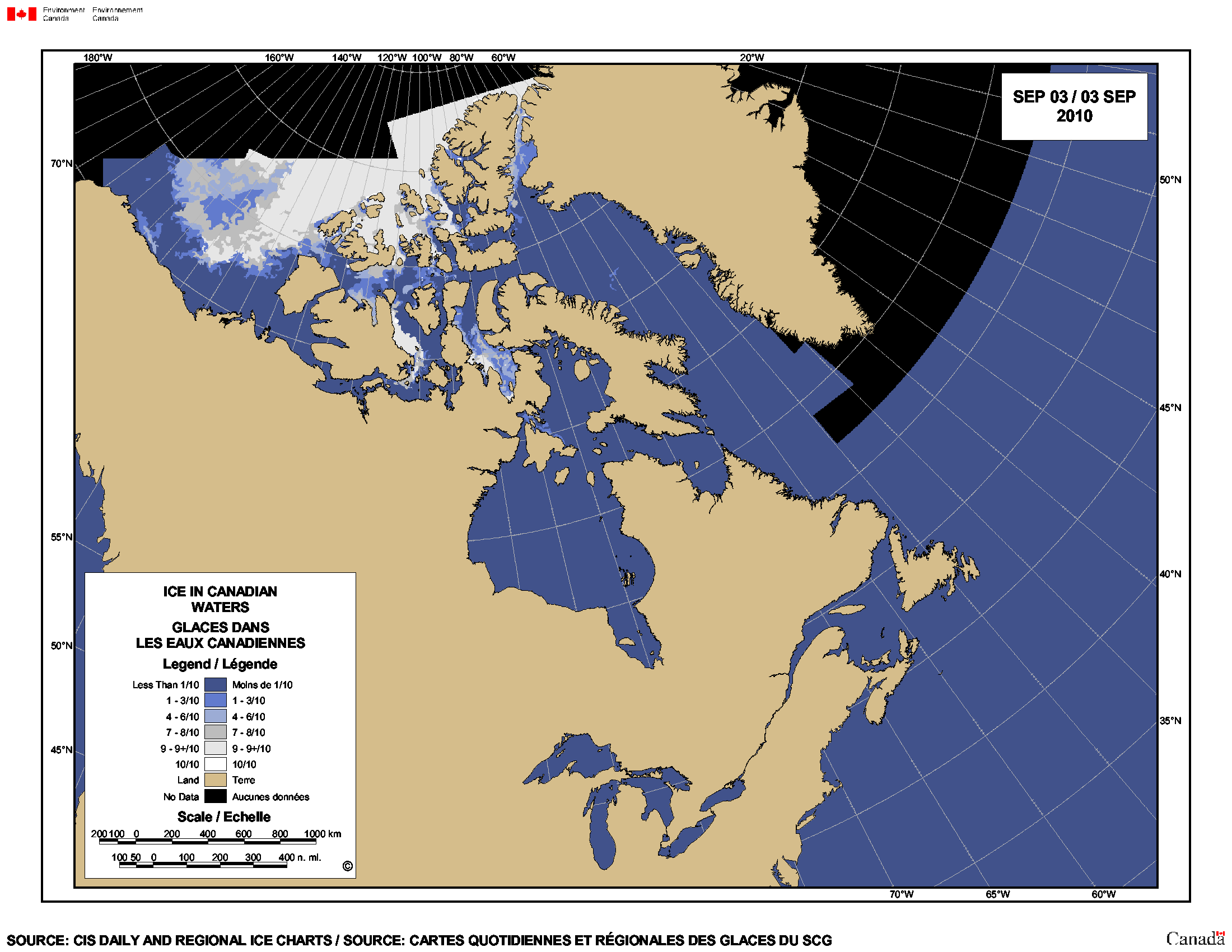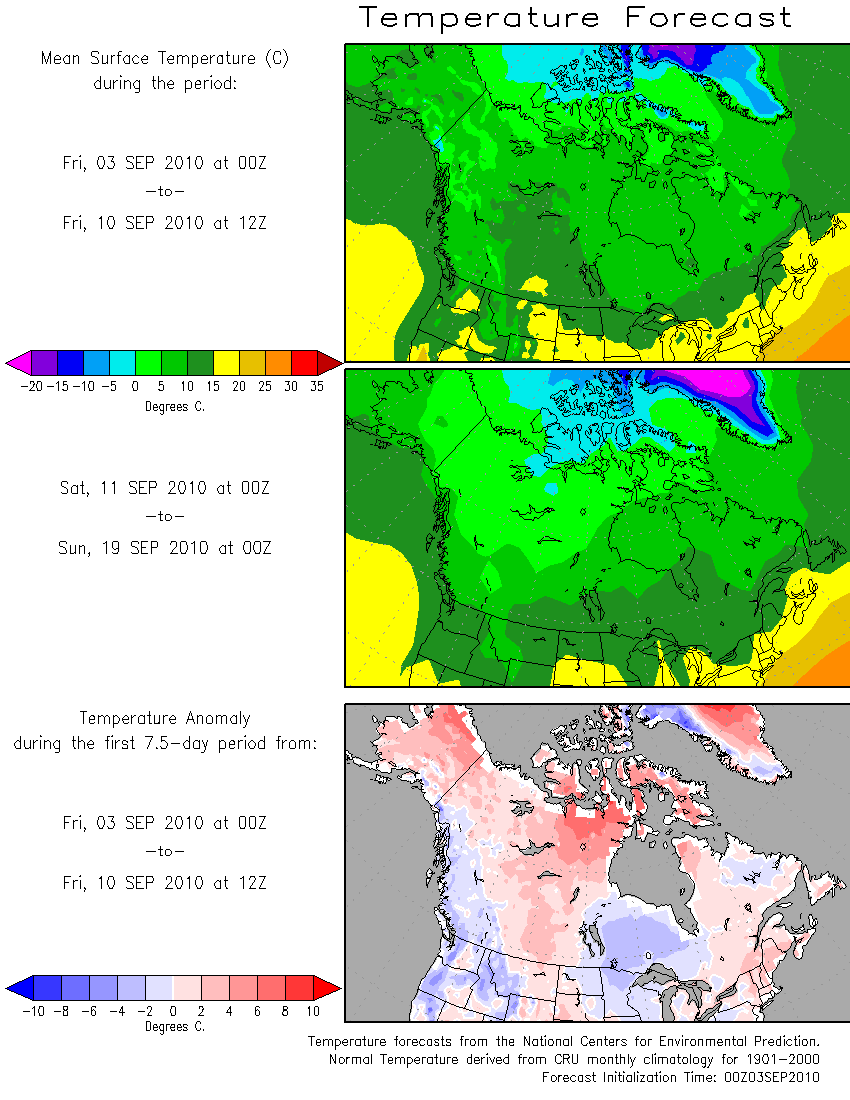Despite one of the warmest winters and summers on record over the Canadian Archipelago, the Northwest Passage never fully opened this year. A few boats did manage to get through.
http://ice-glaces.ec.gc.ca/Ice_Can/CMMBCTCA.gif
Freezing temperatures are forecast from here on out




In the transition from summer melt to winter freeze it is the warmer water that continues the melt. Surface air temperatures need to reduce the SST to the point where freezing can commence. I note that the ice extent dropped 55000 sq km today (notwithstanding the forecast freezing temperatures) to fall to just below 2009. The North West passage does not serve as a proxy for the general ice condition in the arctic.
The NorthWest Passage, 2010:
http://rhinohide.cx/co2/arctic/img/ParryStrait-20100827.jpg
http://rhinohide.cx/co2/arctic/img/ParryStrait-arctic.seaice.color.2010-08-27.png
The Titanic was traveling through a region of less than 1% concentration ice when it sank.
McClure doesn’t look like it will be opening up enough to really declare the northern route of the NWP open, unless some high positions itself in such a way that all the ice gets blown away, but all the other routes seem very navigable, though it’s never easy with all those little ice floes, especially in a trimaran, like the one those two Norwegians are using to circumnavigate the Pole in one season.
They have reached American waters by the way. It’s not easy as they are facing a lot of headwind, but if things stay like this for a week or two, they should be able to get through the NWP.
“The North West passage does not serve as a proxy for the general ice condition in the arctic.”
but it serves to distract and mislead.
BTW, the break-up of the landfast ice was extremely early and fast compared to other years (I’ve watched the satellite images very closely). The only reason there is ice in the NWP, is that all the landfast ice between the Queen Elizabeth Islands has broken up too and now multi-year ice from the Arctic Basin – that normally piles up against these islands and Ellesmere Island – is flowing through, some of the floes ending up in the NWP, or Melville Sound to be more precise.
The Canadian Archipelago had a very warm (relatively speaking) winter and summer. The winter anomaly drove UAH and RSS temperatures way up.
Indeed. That’s why the NWP started opening up very early this year and is now practically open. Your post makes it sound as if it’s all over for the NWP for this year, this despite the warm winter and summer. But that’s not the whole truth.
Check out the latest weather forecast
http://wxmaps.org/pix/temp2.html
If those colder temps stop the transport of multi-year ice through the Queen Elizabeth Islands the Norwegians will have an easy time making it through the NWP.
Here’s a more detailed weather forecast for Sep 4-10 by Environment Canada.
Oh, and I had another question:
A few boats did manage to get through.
Do you have a source for this?
There was a discussion about it on WUWT, but I don’t remember the details.
Steven, here’s an overview. I don’t know if and when these ships made it through the NWP (only keeping an eye on the Norwegians and Russians who are going for circumnavigation), and whether there are any other ships attempting to cross the NWP. There probably are.